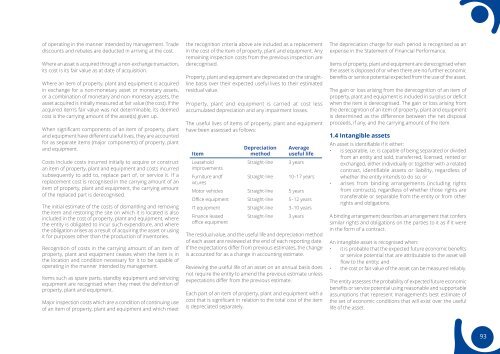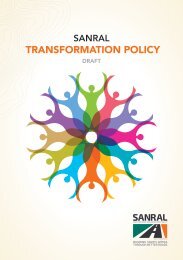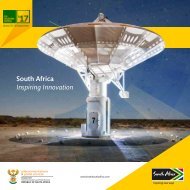Brand-South Africa - Annual report 2015 - 2016
During the past financial year, aligned with its mandate to build pride and patriotism in the Nation Brand, Brand South Africa has worked on initiatives to encourage active citizenship in partnership with its stakeholders in government, business, civil society and identified influential forums to increase the participation of all people, particularly our young people, in building a strong, cohesive Nation Brand. These activities, together with engagements at provincial level on Nation Brand alignment, contribute to social cohesion and a positive Nation Brand. Brand South Africa’s activities took place under the leadership of its new CEO, Amb. Kingsley Makhubela, PhD, who joined the organisation during the year.
During the past financial year, aligned with its mandate to build pride and patriotism in the Nation Brand, Brand South Africa has worked on initiatives to encourage active citizenship in partnership with its stakeholders in government, business, civil society and identified influential forums to increase the participation of all people, particularly our young people, in building a strong, cohesive Nation Brand. These activities, together with engagements at provincial level on Nation Brand alignment, contribute to social cohesion and a positive Nation Brand.
Brand South Africa’s activities took place under the leadership of its new CEO, Amb. Kingsley Makhubela, PhD, who joined the organisation during the year.
Create successful ePaper yourself
Turn your PDF publications into a flip-book with our unique Google optimized e-Paper software.
of operating in the manner intended by management. Trade<br />
discounts and rebates are deducted in arriving at the cost.<br />
Where an asset is acquired through a non-exchange transaction,<br />
its cost is its fair value as at date of acquisition.<br />
Where an item of property, plant and equipment is acquired<br />
in exchange for a non-monetary asset or monetary assets,<br />
or a combination of monetary and non-monetary assets, the<br />
asset acquired is initially measured at fair value (the cost). If the<br />
acquired item’s fair value was not determinable, its deemed<br />
cost is the carrying amount of the asset(s) given up.<br />
When significant components of an item of property, plant<br />
and equipment have different useful lives, they are accounted<br />
for as separate items (major components) of property, plant<br />
and equipment.<br />
Costs include costs incurred initially to acquire or construct<br />
an item of property, plant and equipment and costs incurred<br />
subsequently to add to, replace part of, or service it. If a<br />
replacement cost is recognised in the carrying amount of an<br />
item of property, plant and equipment, the carrying amount<br />
of the replaced part is derecognised.<br />
The initial estimate of the costs of dismantling and removing<br />
the item and restoring the site on which it is located is also<br />
included in the cost of property, plant and equipment, where<br />
the entity is obligated to incur such expenditure, and where<br />
the obligation arises as a result of acquiring the asset or using<br />
it for purposes other than the production of inventories.<br />
Recognition of costs in the carrying amount of an item of<br />
property, plant and equipment ceases when the item is in<br />
the location and condition necessary for it to be capable of<br />
operating in the manner intended by management.<br />
Items such as spare parts, standby equipment and servicing<br />
equipment are recognised when they meet the definition of<br />
property, plant and equipment.<br />
Major inspection costs which are a condition of continuing use<br />
of an item of property, plant and equipment and which meet<br />
the recognition criteria above are included as a replacement<br />
in the cost of the item of property, plant and equipment. Any<br />
remaining inspection costs from the previous inspection are<br />
derecognised.<br />
Property, plant and equipment are depreciated on the straightline<br />
basis over their expected useful lives to their estimated<br />
residual value.<br />
Property, plant and equipment is carried at cost less<br />
accumulated depreciation and any impairment losses.<br />
The useful lives of items of property, plant and equipment<br />
have been assessed as follows:<br />
Item<br />
Depreciation<br />
method<br />
Average<br />
useful life<br />
Leasehold<br />
Straight-line 3 years<br />
improvements<br />
Furniture andf<br />
Straight-line 10–17 years<br />
ixtures<br />
Motor vehicles Straight-line 5 years<br />
Office equipment Straight-line 5–12 years<br />
IT equipment Straight-line 3–10 years<br />
Finance leased<br />
office equipment<br />
Straight-line 3 years<br />
The residual value, and the useful life and depreciation method<br />
of each asset are reviewed at the end of each <strong>report</strong>ing date.<br />
If the expectations differ from previous estimates, the change<br />
is accounted for as a change in accounting estimate.<br />
Reviewing the useful life of an asset on an annual basis does<br />
not require the entity to amend the previous estimate unless<br />
expectations differ from the previous estimate.<br />
Each part of an item of property, plant and equipment with a<br />
cost that is significant in relation to the total cost of the item<br />
is depreciated separately.<br />
The depreciation charge for each period is recognised as an<br />
expense in the Statement of Financial Performance.<br />
Items of property, plant and equipment are derecognised when<br />
the asset is disposed of or when there are no further economic<br />
benefits or service potential expected from the use of the asset.<br />
The gain or loss arising from the derecognition of an item of<br />
property, plant and equipment is included in surplus or deficit<br />
when the item is derecognised. The gain or loss arising from<br />
the derecognition of an item of property, plant and equipment<br />
is determined as the difference between the net disposal<br />
proceeds, if any, and the carrying amount of the item.<br />
1.4 Intangible assets<br />
An asset is identifiable if it either:<br />
• is separable, i.e. is capable of being separated or divided<br />
from an entity and sold, transferred, licensed, rented or<br />
exchanged, either individually or together with a related<br />
contract, identifiable assets or liability, regardless of<br />
whether the entity intends to do so; or<br />
• arises from binding arrangements (including rights<br />
from contracts), regardless of whether those rights are<br />
transferable or separable from the entity or from other<br />
rights and obligations.<br />
A binding arrangement describes an arrangement that confers<br />
similar rights and obligations on the parties to it as if it were<br />
in the form of a contract.<br />
An intangible asset is recognised when:<br />
• it is probable that the expected future economic benefits<br />
or service potential that are attributable to the asset will<br />
flow to the entity; and<br />
• the cost or fair value of the asset can be measured reliably.<br />
The entity assesses the probability of expected future economic<br />
benefits or service potential using reasonable and supportable<br />
assumptions that represent management’s best estimate of<br />
the set of economic conditions that will exist over the useful<br />
life of the asset.<br />
93











